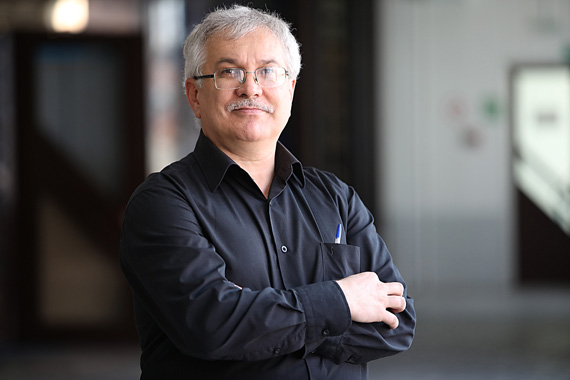Relict Plants of Siberia
Перевод: Elena Lazutkina, Associate Professor, School of Philology and Language Communication SibFU, Ekaterina Ponomareva, Senior Lecturer, School of Philology and Language Communication SibFU
There are not many habitable areas on our planet with unknown to science species, however, Siberia is still surprising scientists. N. Stepanov, D.Bi.Sci., Full Professor discovered 33 new species of plants and claims that every field season increases their number.

— Nikolai Vitalievich, how specific is the plant life of Krasnoyarsk Krai?
— Wildlife of our region is unique, although we are not fully aware of it. One wonders why. For one thing, the region is very large and even the most habitable southern areas are not sufficiently explored compared to Altai and Baikal whose exploration status is vastly superior.
The fact that we constantly find new species implies there is a huge number of objects we are yet to study. The Sayans are particularly remarkable as they are one of the centres of biodiversity in Eurasia having preserved a great deal of ancient plants. This is due to the fact that biota development in the region has not undergone a dramatic transformation in a million years. If the North was destroyed by glacial activity approximately forty thousand years ago, then in the mountains of Southern Siberia glaciers did not go down thus they left ancient flora and fauna intact. The preserved species are tens and even millions years of age, they are living fossils!
Besides, speciation is still underway. Then, environmental conditions in the mountains are contrasting and evolutionary processes are still taking place. These are the two sources of wealth of Krasnoyarsk flora.
— Are there many endemic plant species, those that can be found only in our region?
— There are 20 % of such species in the South, which makes it the fifth. They are fewer in the North, there is a large number of ubiquitous plants there. Two thousand three hundred species were registered in the Pre-Yenisei Sayans, about five hundred of which are endemic.
Some endemic plant species of Krasnoyarsk Krai are entered in its Red List, which is longer than the Red List of animal species. Even while the Red List was being published, we kept finding such plants.
There are well-known ones among endemics. To cite one example, there is relict Naschokin’s lime tree, an intermediate species between Far Eastern lime and European lime, Krasnoyarsk Krai being its only range of habitat. It was not until fairly recently that Vitaliy’s zharok (Siberian globeflower) was described. It can be found on subalpine meadows in Ergaki Nature Park and nowhere else. It has sort of spurts of flame in the middle unlike the common globeflower, it is also brighter and larger. Alas, it only grows in the management unit where development is allowed, there are whole glades of them there. So, down come businessmen, see this flame-coloured glade and they are like, wow, how lovely, we will be building right here! If they build the area over, though, there will be no globeflowers left.
— Why does the zharok have such a name and how are new names thought up?
— I’ve named the zharok in honor of my father, who is a natural scientist. By the way, he has made a lot of drawings for the Red List of plants of our region, more than 250. Generally speaking, many artists worked on the list. And you can see photos of our plants on the website www.plantarium.ru. There are more than 2000 pictures.
Plants are often called by toponyms. There are many Sayan and Yenisei species. For example, Sayan Kandık (Erythronium) which was confused with Siberian Kandik for a long time. It is smaller in size, has genetic distinctions and looks a bit different. Its flowers appear as soon as the snow comes down. In spring you can see purple glades spangled with it.
— Which of the plants from the Red List of the Region are the oldest?
— Ferns, lichens, and lycopods. There are some lycopods which are at least 100 million years old. They are the descendants of large tree-like lycopods, from which the coal deposits have formed. These 40-meter plants grew in wetlands. And their descendants have the size of only a matchbox. They were replaced by competitors, and then lycopods settled on the bottom of absolutely clean ponds. They have been recently found in Ergaki and Mozharsky Lake.
— Do foreign botanists come to study our flora?
— Of course. They know very little about Siberia. I worked with Swiss specialists. The vastness of our land made a huge impression on them. Foreign colleagues are affected after finding out that our Sayans are twice as large as the Caucasus and comparable to France in their area.